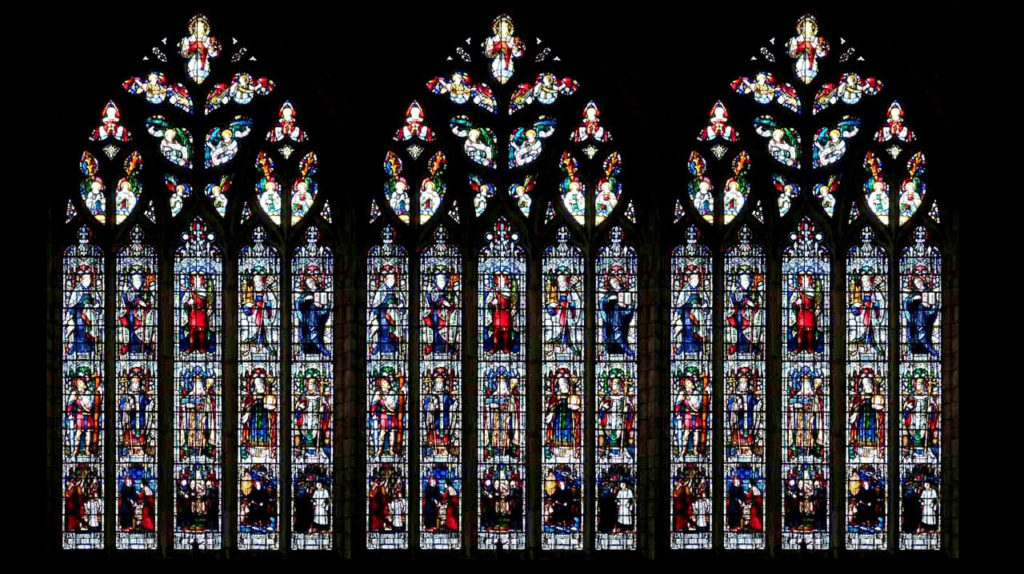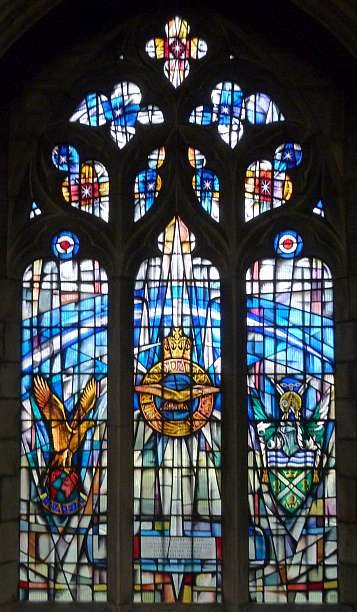Visitor Guide 14: Stained Glass Windows


Look up and you will see six, tall lancet windows of the north wall. The stonework here dates back to the 13th century, but the original glass was sadly destroyed by puritans and reformers after the canons were expelled in 1537.
New stained-glass windows were installed in 1873. The subject of these windows includes New Testament themes and the Apostles with their emblems. St Andrew, Hexham Abbey’s patron saint is pictured in the dominant position. Other subjects featured in the North Transept include the Resurrection, St Paul and Mary Magdalene, Christ and the Blessed Virgin Mary, and St Peter and St Anne.
From this viewpoint, as you look south back to the entrance, you will see the newest stained glass in the Abbey – the Tyrrell Window. It was installed in 2012 and was designed to reflect hospitality, a point of pride for the Abbey.
Walking back into the crossing, looking Behind the High Altar, the Great East Window consists of six large windows of figures which are approximately life-size. The three upper windows are devoted to St Andrew, while the lower windows include three large figures of Christ illustrating the progress of Christianity in Hexham.
The west wall window at the end of the Nave features episodes in the lives of northern saints. Its subjects include Bishop Acca, Queen Etheldreda and her grant of land to Wilfrid, as well as a depiction of the plans of Hexham Abbey.
The north wall of the Nave contains two windows commemorating the contribution of local people to the achievement of the Royal British Legion and the Royal Air Force. The third window celebrates the life of Queen Etheldreda and incorporates fragments of Roman glass found at Corbridge into the design, the only pre-Reformation glass in the Abbey.
The west wall of the nave aisle houses the Baptistry or Children’s Window. The intention of the architect Temple Moore was to have the font placed by this window, but the font was moved to it’s current location shortly after construction finished on the Nave. It seems fitting though, that this window illustrating the beginning of the Christian faith through baptism overlooks our current children’s corner.
